With tomato sauce, pesto or clams, spaghetti are part of traditional Italian recipes.
They are the pasta format that symbolises Italian gastronomy: so important that they have given their name to a film genre (the 'spaghetti-western') and have been immortalised on celluloid alongside actors of the calibre of Totò or Alberto Sordi.
There are only two main ingredients: durum wheat flour and water. From such a simple base come dozens of variations and every Italian region has its own favourite.
January 4th has even been declared National Spaghetti Day in the United States. To celebrate this day, we have decided to present you with ten Italian spaghetti recipes that are a must.
But where did spaghetti come from? Who invented them?

Spaghetti in traditional Italian recipes: do you know the origins?

The origins of spaghetti are neither clear nor easy to trace. The most popular opinion gives importance to the clash between different cultures: the Italian culture, with various types of long pasta already in use in the Middle Ages, the Chinese culture with its classic ‘soy noodles’ (whose use in the East is reported by Marco Polo), and the Arab culture, with its durum wheat sold in Sicily and used for 'vermicelli'.
From this mix of cultures, a middle ground emerged in the heart of the Mediterranean: spaghetti as we know it today, an inexpensive, versatile and nutritious food: in practice, perfect for feeding people and tasty with numerous Italian recipes.
In the 18th century, the countryside of the Kingdom of Naples was redesigned to boost agricultural production. Thanks to the resulting surplus of raw materials, including durum wheat, the foundations of Neapolitan gastronomic traditions were laid. Artisan pasta factories were opened throughout Campania, and the famous spaghetti shape became a culinary symbol first of Naples and then of the whole of Italy.
The icing on the cake comes from the cultivation of spaghetti's best friend: the San Marzano tomato, the ideal condiment. This has made it possible to create different seasonings that make spaghetti the protagonist of many Italian recipes. Let's discover them together!
10. Spaghetti puttanesca style

Contested between Campania and Lazio, the variant for spaghetti alla puttanesca is simple, colourful and very tasty and is one of the traditional Italian recipes. The basic Campania version (known in the jargon as 'aulive e chiapparielle') dresses the pasta with tomato sauce, oil, garlic, Gaeta black olives, oregano and capers, with the addition of parsley and chilli pepper; the Roman version also adds salted anchovies to give more flavour.
The origins of the particular name are difficult to trace. Some sources suggest that the preparation of this recipe was perfect for keeping clients in the brothels of the Spanish quarters, as it was quick to prepare and very tasty. Others believe the name derives from the speed with which it is prepared, almost like an empty-fridge preparation.
Spaghetti puttanesca style encapsulates all the colours and aromas of Mediterranean cuisine. You can taste the two variants in many restaurants between Lazio and Campania, a great classic that does not weigh on your wallet and with which you are always on the safe side.
In the Italian gastronomic tradition, pizza, as well as spaghetti, plays a fundamental role: an icon of our country, if you are looking for a new experience, learn how to make it from the real masters!
Learn how to make pizza!9. Spaghetti with garlic, oil and chilli pepper
The garlic, oil and chilli pepper sauce is the timeless star of late-night spaghetti nights with friends. A guarantee of flavour and success, since it is almost impossible to get it wrong.
This is one of the most popular recipes among Italians (not just students or hurried cooks) and combines speed of preparation with the unmistakable fragrance of garlic sautéing and the flavour of chilli pepper (fresh or dried). The origins of the recipe are to be found in Campania, where it was the perfect example of cucina povera and is still present in typical dishes.
Today, this first course has crossed regional borders and is prepared in kitchens all over Italy. It is rare to find it on restaurant menus. The best way to enjoy this pasta is to cook it at home, perhaps inviting friends over and uncorking some white wine, such as Trebbiano or Falanghina
8. Spaghetti with pesto
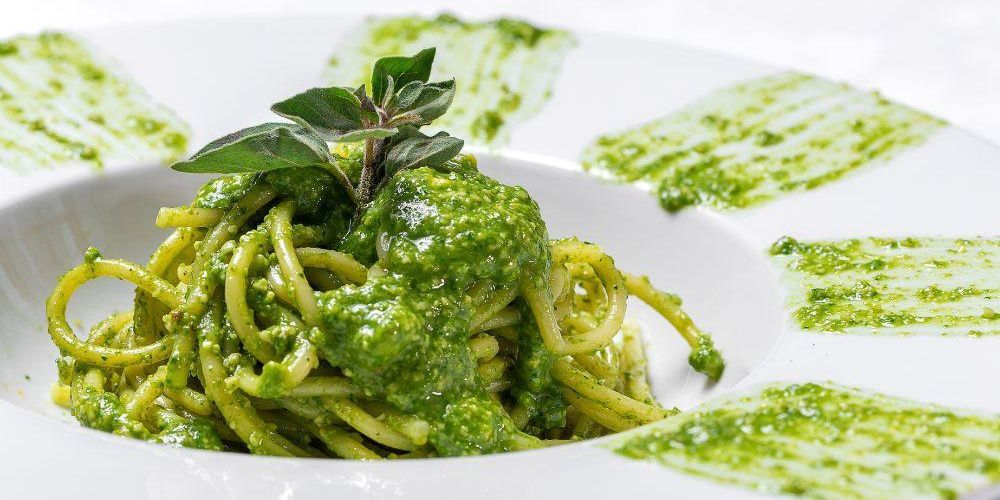
All of Liguria in one dish: colourful and fragrant, spaghetti with pesto is the dominant pasta dish in Genoa and Liguria. Pesto alla Genovese is in fact the traditional condiment of this area of Italy. Its main ingredient is Genovese basil, which gives it its unmistakable smell and green colour.
In addition to basil, the sauce recipe includes pine nuts, garlic, salt, Parmesan cheese and extra virgin olive oil. All the ingredients retain their aroma and characteristic flavour because they are not cooked, but rather crushed raw and cold-mixed.
The pesto recipe also boasts several variations. For example, in the hinterland, walnuts are used instead of the more expensive pine nuts, while another version involves adding green beans and potatoes. Other forms of pasta are often used instead of spaghetti, such as trenette, gnocchi or trofie. Pesto is considered the second most famous pasta sauce in the world, beaten only by tomato sauce.
The best places to enjoy spaghetti withl pesto are Genoa, La Spezia and the entire Ligurian hinterland. Look for a traditional inn or trattoria and enjoy the explosion of flavour, perhaps paired with a Ligurian white wine (such as Pigato della Riviera Ligure di Ponente DOC).
If the history and taste of pesto intrigue you, we recommend attending an event that celebrates the importance of this sauce and Ligurian food culture: the World Championship of Pesto Genovese al mortaio. This is a biennial festival held in Genoa, where you can watch the chefs in action as they prepare their version of pesto. At the end, of course, all that remains is to enjoy a nice portion of spaghetti with pesto and elect the winner.
Take a cooking class in Genoa!7. Seafood spaghetti
Seafood spaghetti is a great classic of Italian fish restaurants. This Italian spaghetti recipe is typical of the cuisine of Campania, but is now widespread throughout Italy, especially in coastal areas. With over 8000 kilometres of coastline, you can imagine how many variations there are of seafood spaghetti.
The cornerstones of the recipe remain spaghetti and seafood, including shellfish (prawns, scampi) and molluscs (squid, clams and mussels above all). The seafood must obviously be very fresh in order to get the best possible taste. The delicious and irresistible taste of the sea is mainly provided by using the cooking water of the shellfish and preparing a good fish stock.
Every chef proposes his own variation of this pasta: there are those who indulge in combining rarer crustaceans and molluscs (such as mantis shrimp or limpets) or those who prefer it red with cherry tomatoes instead of white. The end result remains the dish par excellence for those who love the sea and want to feel all the flavour and smell of the Mediterranean on their plate.
Seafood spaghetti can be enjoyed in any self-respecting seafood restaurant, but it can also be prepared at home: just visit one of the many fish markets in Italian cities and chat with the fishmonger to get advice on the freshest seafood.
To enhance the flavours of seafood, drink a fragrant white wine such as a Greco di Tufo or a Gavi!
6. Pecorino and black pepper spaghetti
Pecorino and black pepper spaghetti (known as "cacio e pepe") is a typical Lazio pasta dish. It is a pasta that makes simplicity and strong flavour its strong points.
This recipe is linked to the rural traditions of the Roman countryside and the transhumance of shepherds in the mountainous regions of Lazio and Abruzzo. For the shepherds, it was indeed important to cook with food that was easy to find and could last a long time in their travelling saddlebags. In the original recipe, 'cacio' is therefore Roman pecorino cheese, which is easy to obtain and keep, and black peppercorns.
The cunning owners of Roman taverns used to serve the cacio e pepe very salty so as to make their customers thirsty and pour them copious cups of wine. Today, this spaghetti variant of traditional Italian recipes is an integral part of Roman and Lazio cuisine, but more generally of central Italy.
The speed of preparation makes it an easy pasta to make even at home, while the PDO ingredients and the final mantecatura with the cooking water of the spaghetti (or tonnarelli) give the recipe its much renowned creaminess.
5. Spaghetti all'amatriciana
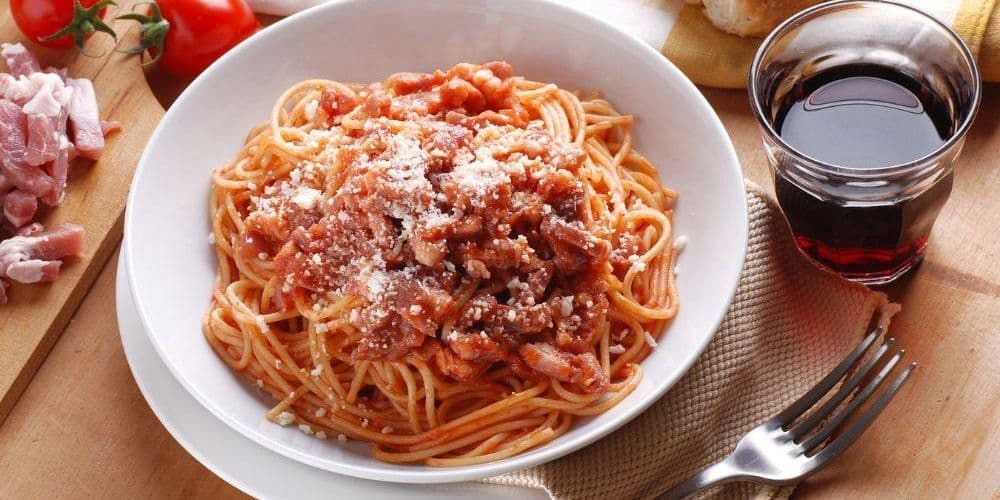
Just 'spaghetti, guanciale di Amatrice, pecorino romano and peeled tomatoes': words and music certified by the European Union as a Traditional Speciality Guaranteed.
Spaghetti all'amatriciana is a recipe with a strong flavour and an ancient history, which goes hand in hand with the evolution of the Italian territory. It originated without tomatoes in Amatrice, a town in the Kingdom of Naples, and was called 'gricia' pasta.
Later trade with the Kingdom of Naples led to a wider use of tomato, which became the best friend of guanciale, creating the strong-flavoured sauce we know today. Amatrice passed first to Abruzzo and then to Lazio, making a name for itself in Rome among the 'matriciani', the shepherds of Amatrice who sold their products in the capital.
From here, the road to spaghetti all'amatriciana is all downhill: the classic recipe withstands countless variations (bacon? onion? don't tell the Romans!) and becomes one of Rome's signature dishes. You can enjoy spaghetti or bucatini all'amatriciana in almost every trattoria and restaurant in Lazio and the capital, perhaps paired with a solid red wine such as Montepulciano d'Abruzzo.
If you want to learn more about amatriciana, visit the Museum of Popular Arts and Traditions in Configno, in the province of Rieti, where there is a section specifically dedicated to spaghetti all'amatriciana. On display are original pasta-making machines and kitchen utensils related to the preparation of this historical recipe.
Discover a delicious food tour4. Spaghetti Syracusan style
Spaghetti Syracusan style is a Sicilian speciality using anchovies (called 'anciova') and the delicious addition of breadcrumbs (called 'mollica atturrata') toasted in a pan. The crunchiness of the toasted breadcrumbs crunching under your teeth and the salty taste of the anchovies make this dish a great classic of Mediterranean cuisine.
In one of the most popular variations of spaghetti alla siracusana, the spaghetti are pan-fried to make them tastier and crispier. Simple and quick to make at home, to best enjoy this Sicilian recipe we recommend ordering it in the trattorias of Syracuse, an opportunity to discover a fascinating city.
Finally, do not confuse spaghetti Syracusan style with 'pasta alla siracusana', a gargantuan display of culinary art that combines anchovies with peppers, tomatoes, aubergines, olives, capers and caciocavallo cheese.
To enjoy this traditional spaghetti recipe you can pair it with an appropriate wine, indulging in a guided wine-tasting tour that will introduce you to and appreciate the best ones to choose from.
3. Spaghetti omelette
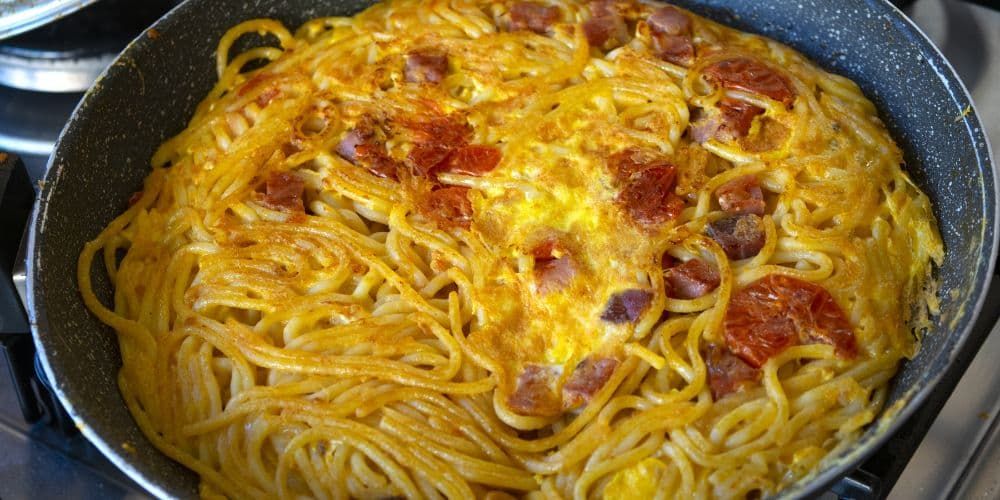
The spaghetti omelette is the mother of all recovery recipes. This recipe is a great classic to make at home with leftover spaghetti from the previous meal, adding eggs, parmesan cheese and perhaps bacon or smoked salami to add flavour. It is typical of Campania cuisine and is called 'frittata di maccheroni': cooking it in a pan creates a crispy and absolutely irresistible surface.
But this recipe is not just confined to the kitchens of the Italians!
Strolling through the streets of Naples you can find it in the fry shops that cook take-away food: the spaghetti frittata is at its best wrapped in foil along with the other succulent fried foods (potato crocchè, mozzarelline, zucchini flowers), sipping a beer and walking through the city's alleys.
Discover the guided Tour of Rome with Dinner2. Spaghetti with clams
Among Italian spaghetti recipes, spaghetti with clams is the queen of seafood pasta. Clams are therefore the main ingredient and must be 'veraci' (from the Ruditapes decussatus genus).
Around this succulent mollusc revolve a few but important ingredients, including tomatoes (for the red version), garlic, oil, parsley and chilli pepper. The spaghetti must be drained strictly al dente and the final part of their cooking must be completed by stirring them in the pan with the clam sauté.
This recipe is typical of the Campania region, but is extremely widespread in all Italian coastal areas, including the Veneto region where lagoon or sea clams are used. In the post-war period, in Campania, a version of the pasta ironically known as 'spaghetti con le vongole fujute' ('escaped', i.e. not present in the dish, in which a memory of the smell of the sea remained thanks to the garlic and parsley) was known.
Spaghetti with clams is a great classic of Italian cuisine: if you are in an Italian coastal area and have to choose a single fish dish to try in a trattoria... order it and you will not be disappointed!
1. Spaghetti Carbonara
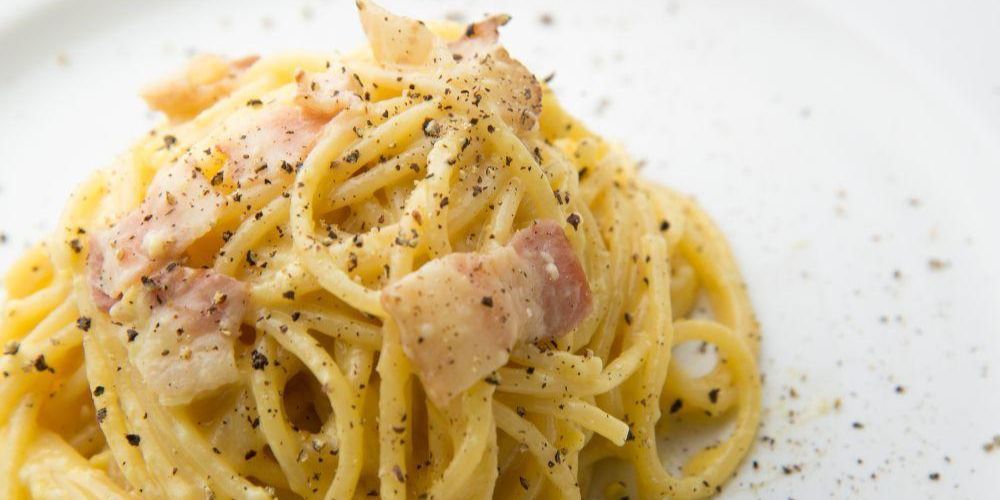
Spaghetti alla carbonara is one of the symbols of Rome, almost on a par with the Dome and the Colosseum; it is a dish not to be missed by anyone visiting the capital, omnipresent on the menus of all the trattorias and adored in equal measure by Romans and tourists alike.
It involves a handful of ingredients, mixed together in the right ways and at the right times, that make you hungry just reading about them: spaghetti, guanciale, egg yolks, Roman pecorino cheese and freshly ground pepper. We recommend enjoying a carbonara in a trattoria in Rome and pairing it with a fresh white wine, such as a Vermentino, to contrast the strong flavour of the pasta.
In home cooking, the basic recipe for carbonara is sometimes bastardised with additions and personal touches (cream is still a definite no-no), making it one of the most talked-about pastas in Italy. The recipe is not as ancient in origin as one might think. In fact, there is no trace of this dish in recipe books prior to the Second World War.
This is one of the most credited reconstructions by food historians: in 1944, American soldiers moving up Italy to liberate it crashed against the Gustav Line (from Lazio to Abruzzo), defended by Nazi-Fascist troops. They were stationed for months in central Italy where they got to know the 'cacio e ova' pasta typical of those areas.
By adding smoked bacon from their reactions (and then local guan ciale) to the pasta, they ended up creating the forerunner of carbonara, eventually bringing it to Rome where the recipe found fertile ground to evolve and establish itself, becoming the delicacy that makes us lick our lips today.
Today, you can still find it on all the tasting tours that take you on a discovery of Italian culinary traditions.
Discover a food and wine tasting in RomeAbout the author
Written on 04/01/2023


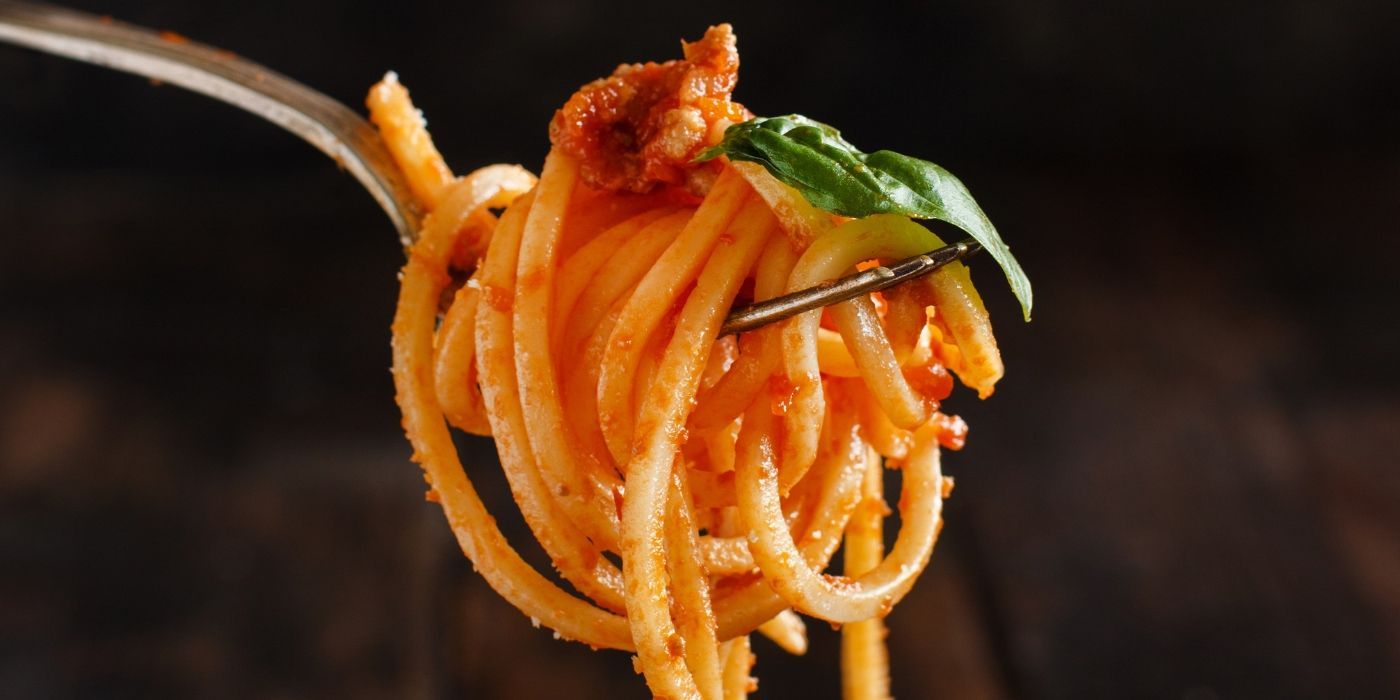
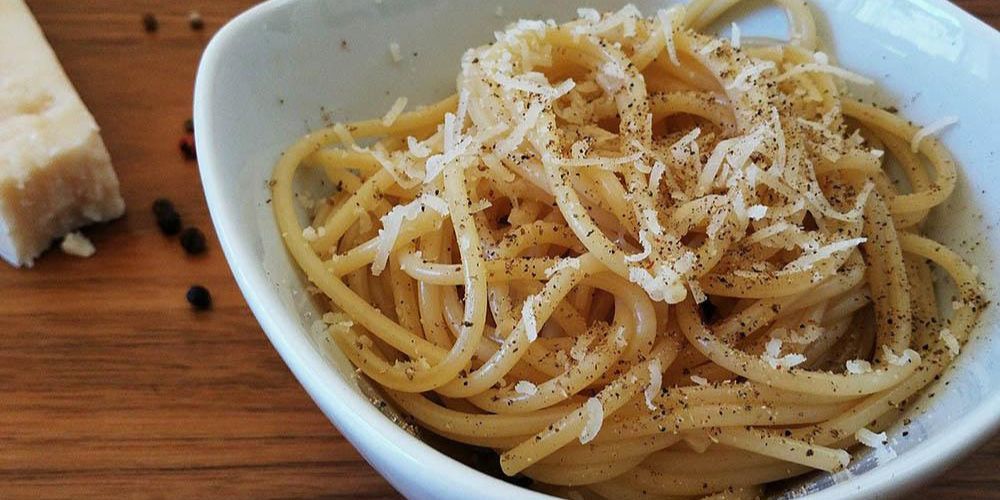
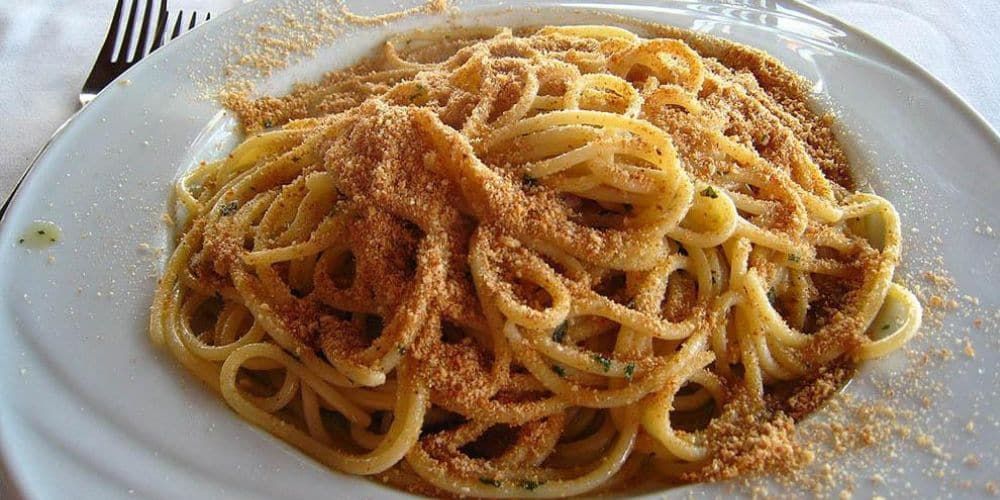
Fabrizio Mariani
Spaghetti are the most iconic pasta shape in Italy. Follow us on a culinary journey through 10 Italian spaghetti recipes (and where to eat them).